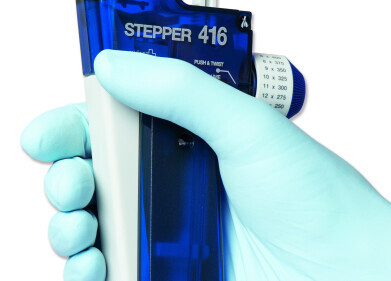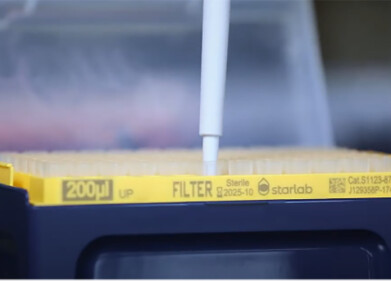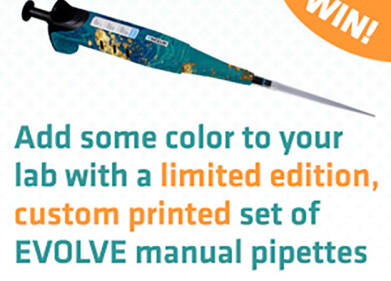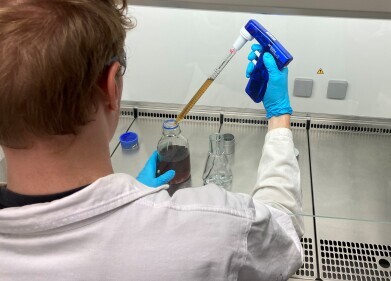Pipettes
How to Use a Pipette in the Lab - A Complete Guide
May 10 2021
From high schools and universities to state-of-the-art research centres, pipettes are a staple in laboratories around the world. These small but highly practical instruments come in a variety of sizes, designs and capacities, with different pipettes used depending on the application. Below, we take a look at best-practice techniques for how to use a pipette in the lab. We also cover some important pipette facts, including the history of the instruments, types of pipette models and pipette laboratory apparatus uses.
What is a laboratory pipette?
Laboratory pipettes are purpose-built tools that allow scientists to transport liquid safely and precisely. Commonly used in biology, chemistry and medical laboratories, the piston-driven instruments resemble syringes and come in many different designs, ranging from basic single-piece glass pipettes to sophisticated electronic pipettes. Accuracy and precision can vary significantly between designs, with laboratories choosing pipettes based on their unique needs. Some pipettes are operated by hand while others feature automatic technology.
How do laboratory pipettes work?
Most laboratory pipettes use an air vacuum above the liquid-holding chamber to suck up and release liquid. This air displacement design is used in both hand-operated and electronic pipettes and sees the tip inserted just below the surface of a liquid. Pressure on the plunger is then released, which draws up fluid into the tip. To release fluid, pressure is applied to the plunger which forces liquid back down the chamber and out the tip.
The history of laboratory pipettes
While the concept of pipettes has been around for more than a century, the first micropipette wasn’t patented until 1957. It was developed by German scientist Dr Heinrich Schnitger, founder of industry-leading laboratory instrument manufacturer, Eppendorf. Schnitger began commercial production in 1961, with Eppendorf micropipettes quickly gaining popularity in laboratories around the world.
American inventor Warren Gilson and professor of biochemistry Henry Lardy have also been credited with the development of adjustable micropipettes. Offering different size and volume combinations, adjustable micropipettes increase flexibility in the laboratory.
Micro and macro pipettes
Designed with precision in mind, micropipettes allow scientists to accurately extract, transport and dispense liquids in the microlitre range. Micropipette capacity ranges from between 1 and 1000 microlitres. Macropipettes are designed for larger quantities and offer a capacity range of between 0.25–5 mL.
Lab pipette types
Over the decades, manufacturers have developed a variety of different pipettes for specialised applications. Today pipettes come in a myriad of designs, with precision and accuracy varying greatly between models. Below, we list some of the most common pipettes found in laboratories.
- Single-channel pipettes
Also known as variable volume air displacement pipettes, single-channel pipettes are extremely versatile and can be used for a variety of applications. Most offer a wide volume range of between 0 to 2500 microlitres. Depending on the application, scientists can choose to use adjustable of fixed volume single-channel pipettes.
The small and compact nature of single-channel pipettes means they’re ideal for use with small source and destination vessels, such as conical tubes and flip-cap containers. As well as being compact enough for use with small vessels, single-channel pipettes work well with troughs and well plates.
High-quality single-channel pipettes are not only efficient but also ergonomic and designed to make the user experience as intuitive and comfortable as possible. This helps to minimise the risk of repetitive strain injury and increases both accuracy and precision.
While compact and easy to use, single-channel pipettes can only be used to transfer one liquid sample at a time. This means they can be tedious and time consuming to use when multiple transfers are required.
- Multichannel pipettes
Great for use in microplate applications, multichannel pipettes are ideal for small scale applications and repetitive tasks. Most feature between 8 to 12 heads and allow scientists to transfer multiple liquid samples using a single device.
Productivity is one of the major benefits of multichannel pipettes, with the technology significantly reducing the number of individual transfers required. They’re often favoured by scientists working on polymerase chain reaction (PCR), enzyme-linked immunosorbent assay (ELISA) and cell culture research.
While multichannel pipettes do reduce the number of individual transfers required, they can still result in hand fatigue. For this reason, many multichannel pipettes feature spring loaded tips to reduce hand stress, minimise the risk of repetitive strain injury and enhance pipette function in laboratory.
- Electronic pipettes
Repetitive strain injury is one of the most common risks encountered by laboratory scientists. Electronic pipettes minimise the risk of injury by automating the air displacement process. Equipped with an internal motor, electronic pipettes offer the same accuracy and precision as their hand-operated counterparts but without the physical strain. Electronic pipettes are particularly useful when multi dispensing, a process that involves dividing a reagent into different doses.
For example, a scientist transferring a PCR master mix to a 96-well plate would benefit greatly from using an electronic pipette. Using a manual pipette would require 96 individual transfers which would result in significant ergonomic strain. In contrast, an electronic pipette can slash the number of transfers by 30% or more, depending on tip size and the volume of liquid being transferred. As well as saving time, the use of electronic pipettes minimises the risk of hand injury and fatigue.
The use of an internal motor regulates the rate of air displacement and dispersion force, which helps reduce barrel contamination and prevent the formation of air bubbles. They can be pre-programmed to suit specific laboratory tasks which increases efficiency. Electronic pipettes also offer adjustable tip spacing, which allows scientists to simultaneously transfer multiple samples.
- Multichannel electronic pipettes
Multichannel electronic pipettes combine the efficiency of multiple heads with the ergonomic benefits of automation. The use of both technologies can drastically boost efficiency when microplate filling. In many cases, the time needed to complete the task can be reduced to less than a minute.
- Serological pipettes
Used in tissue and cell culture applications, serological pipettes are generally manufactured from glass or polystyrene. In laboratories where sterilisation is a priority, scientists will often use disposable pipettes made from durable plastic. Serological pipettes are also commonly used liquid dosages of more than 1mL.
- Manual Stepper pipettes
With a dispensing range of up to 5mL, Manual Stepper pipettes are ideal for basic and repetitive tasks. They’re powered through positive displacement principle and can be used to rapidly dispense small samples in succession without the need to refill the chamber. Reliance on the positive displacement principle makes Manual Stepper pipettes ideally suited for viscous and volatile liquids that can be difficult to handle.
Choosing the right pipette
When using a laboratory pipette, it’s critical to choose the right instrument for the job. As explored above, pipette performance and functionality can vary significantly between models. Before selecting a pipette the following should always be considered:
- The type of task being performed is directly linked to pipette function in laboratory. Does the task require accuracy and precision, or is speed more important? The answer will determine what type of pipette is used.
- What type of liquid is being transported? Is it corrosive and is there potential to damage an unsuitable pipette? The viscosity of the sample can also determine what pipette lab equipment is used.
- How long is the operator recovery time between sessions? For high-intensity tasks the operator may need to take regular breaks or switch out with a colleague every 30 minutes.
- Is the task repetitive? If so, ergonomically designed pipettes can be beneficial as they reduce fatigue and minimise the risk of errors that can jeopardise accuracy and precision.
- Budget will often play a role in the type of pipettes used in laboratories. Electronic pipettes are generally more expensive than their manual counterparts, which makes them more common in less technical laboratories.
Reading the manual
It may sound cliché but when it comes to best-practice pipette function in laboratory, reading the manual is key. Every pipette is different, and functions can vary between models, even if they fall into the same category. All laboratory personnel should have a good understanding of how to use the pipettes available in their workplace. As well as improving accuracy, efficiency and reliability, in-depth knowledge of pipette laboratory apparatus uses is an important part of workplace health and safety.
From epidemiology to DNA analysis, pipettes are indispensable tools in any laboratory. Want to know more about how these technical instruments are used? Lee Moir, Metabolic Phenotyping Manager at the MRC Harwell Institute explores the importance of correct techniques and standardisation practices in ‘The Art of Pipetting - Top Tips’
Digital Edition
Lab Asia 31.2 April 2024
April 2024
In This Edition Chromatography Articles - Approaches to troubleshooting an SPE method for the analysis of oligonucleotides (pt i) - High-precision liquid flow processes demand full fluidic c...
View all digital editions
Events
Apr 28 2024 Montreal, Quebec, Canada
May 05 2024 Seville, Spain
InformEx Zone at CPhl North America
May 07 2024 Pennsylvania, PA, USA
May 14 2024 Oklahoma City, OK, USA
May 15 2024 Birmingham, UK
.jpg)


















